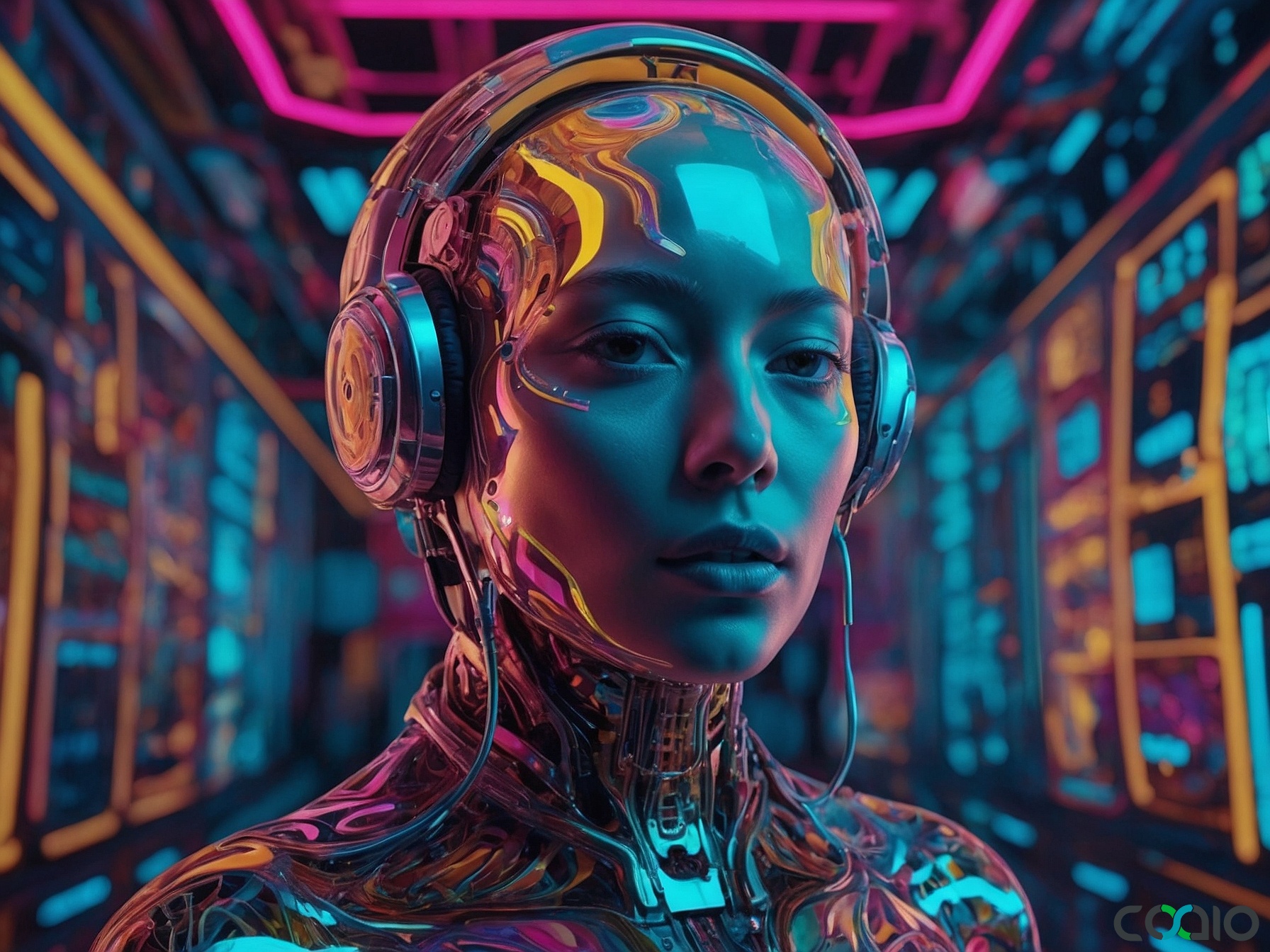
OpenAI's AI Revolution: How New Tools and Partnerships Are Reshaping Software Development in 2025
The tech world is buzzing with innovation as we dive into the latest developments in software development on June 17, 2025. From groundbreaking AI advancements to evolving industry relationships, today’s news highlights how cutting-edge technologies are accelerating digital transformation. This article explores key stories that could redefine how developers build and deploy software, making processes faster, cheaper, and more accessible. With AI at the forefront, we’ll examine OpenAI’s latest moves and their implications for the broader ecosystem.
OpenAI’s o3-pro Launch: A Game-Changer for AI-Driven Development
One of the most significant announcements in recent weeks comes from OpenAI, which has made its o3-pro model available through the OpenAI API. This update is a boon for developers seeking efficient, high-performance AI tools without breaking the bank. According to a report from SD Times, OpenAI’s o3-pro is now accessible to Pro and Team users in ChatGPT, with API pricing slashed by 87% compared to the o1-pro model Read more. This cost reduction, coupled with an 80% price cut for the o3 model, stems from optimizations in OpenAI’s inference stack, allowing for faster processing and lower operational costs.
For software developers, this means integrating advanced AI capabilities into applications has never been easier or more affordable. Imagine building chatbots, content generators, or predictive analytics tools that run seamlessly on a budget. This accessibility could democratize AI development, enabling smaller teams and startups to compete with larger enterprises. The o3-pro’s enhanced efficiency is particularly timely, as it addresses common pain points like high computational demands and escalating costs, which often hinder innovation in the software sector.
In the same SD Times digest, BrowserStack’s addition of Playwright support for real iOS devices stands out as a complementary advancement. Playwright, an open-source automation framework, now allows developers to test web applications on actual iOS hardware, streamlining cross-platform compatibility checks Read more. This integration reduces the reliance on emulators, which can sometimes lead to inaccurate results, and accelerates the testing phase of software development cycles. As a result, teams can deliver more reliable apps faster, minimizing bugs and improving user experiences.
These developments underscore a broader trend in software engineering: the shift towards integrated, AI-enhanced tools that optimize workflows. By leveraging o3-pro alongside tools like Playwright, developers can create more robust applications with less friction, potentially cutting development time by weeks or even months.
The Widening Rift Between OpenAI and Microsoft: Implications for Software Ecosystems
While OpenAI’s technological strides are exciting, they come amid growing tensions with Microsoft, its long-time partner. A recent TechCrunch article highlights the cracks in this relationship, based on a Wall Street Journal report Read more. The strain reportedly stems from disagreements over control, resource allocation, and strategic direction, which could disrupt the collaborative ecosystem that has fueled AI innovations.
This partnership has been pivotal for software development, with Microsoft integrating OpenAI’s models into products like Azure and GitHub Copilot. However, if the rift deepens, it might lead to delays in feature updates or even alternative alliances for OpenAI. For developers, this uncertainty could mean reevaluating dependencies on Microsoft-backed tools. For instance, if OpenAI seeks new partnerships or goes independent, it might accelerate the adoption of open-source alternatives, fostering a more diverse software landscape.
The potential fallout extends beyond immediate products. Software development often relies on stable ecosystems where APIs, cloud services, and AI frameworks interoperate smoothly. A fractured OpenAI-Microsoft alliance could prompt developers to diversify their tech stacks, perhaps exploring emerging platforms that offer similar capabilities without the risks of corporate disputes. This scenario highlights the importance of resilient partnerships in driving innovation, as instability can slow down progress and increase costs for teams worldwide.
Broader Tech Trends Influencing Software Development
Beyond AI-specific news, other developments are indirectly shaping the software development landscape. For example, Finland’s activation of the world’s largest sand battery—a 100 MWh thermal storage system—demonstrates how sustainable tech is intersecting with software Read more. While not directly related to coding, this innovation relies on sophisticated software for energy management and optimization, showcasing how IoT and AI algorithms can enhance green technologies. Developers working on energy-efficient systems might draw inspiration from this, integrating similar principles into software that manages resources more sustainably.
On a less technical note, the release of the trailer for Paramount’s The Naked Gun reboot touches on how entertainment intersects with tech Read more. Though primarily a cultural event, it underscores the role of software in media production, from CGI enhancements to digital marketing tools. This crossover reminds us that software development isn’t confined to tech silos; it’s integral to creative industries, where AI-driven effects and analytics tools are becoming standard.
Meanwhile, the emergence of a new COVID variant, NB.1.8.1, in the US Read more has indirect implications for software teams. As health concerns rise, remote work tools and collaborative platforms—powered by robust software infrastructure—will be crucial for maintaining productivity. This scenario emphasizes the need for resilient, scalable development practices that support distributed teams, ensuring that global events don’t halt innovation.
In essence, these stories illustrate the interconnectedness of tech advancements. Software development is evolving rapidly, driven by AI efficiencies, partnership dynamics, and external factors like sustainability and public health. As developers adapt to these changes, the focus remains on creating tools that are not only powerful but also adaptable and cost-effective.
Promoting Innovation in Software Development
Amid these exciting developments, it’s worth noting how specialized services can help navigate the complexities of modern software creation. For instance, leveraging expert outsourcing can streamline the integration of new AI tools like OpenAI’s o3-pro, allowing teams to focus on core ideas rather than technical hurdles. This approach ensures high-quality results without the overhead of building in-house expertise.
As we wrap up this exploration of today’s tech news, let’s reflect on a vision that aligns perfectly with these advancements. Imagine a world where groundbreaking ideas, like affordable AI models or seamless testing frameworks, can flourish without getting bogged down by operational challenges. That’s the essence of true innovation—empowering creators to bring their visions to life with efficiency and minimal risk. By embracing strategies that prioritize smart resource allocation and user-centric design, we can turn complex technologies into accessible realities, much like how optimized AI stacks are making development more inclusive today.
About Coaio
Coaio Limited is a Hong Kong-based tech firm that specializes in outsourcing software development and building dedicated teams in Vietnam. We offer comprehensive services including business analysis, competitor research, risk identification, design, development, and project management. Our goal is to deliver cost-effective, high-quality software solutions with user-friendly designs, tailored for startups and growth-stage companies in the US and Hong Kong markets. By partnering with us, you can streamline your tech projects, reduce risks, and focus on your core vision, making it easier to leverage the latest innovations like those from OpenAI.
 English
English
 Français
Français
 Español
Español
 廣東話
廣東話
 中文
中文
 日本語
日本語
 한국어
한국어
 العربية
العربية
 Deutsch
Deutsch

